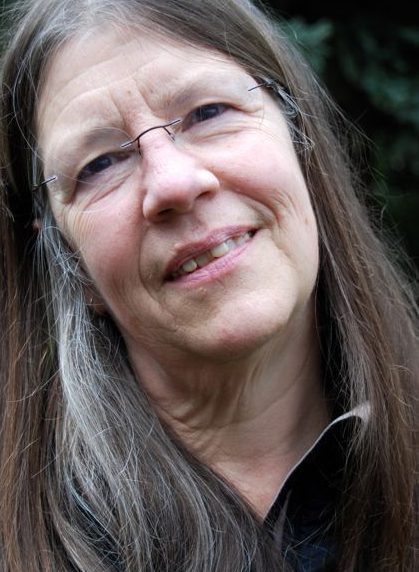Who Am I to Say?
Tell my story, begs the past, as if it was a prayer
for an imagined life or a life that’s better than the life you live.
– Terrance Hayes
Who am I to tell this story?
A white woman pushing seventy,
remembering words I wish I had not said,
door locks hammered down
against young black men on rain-slick city streets.
I am not at risk. Not a victim.
At my 50th high school reunion a man said
I had been quiet and smart back then.
Is that who I was? Am? A weak trickle
in drought never asking why so quiet?
When the Oregon AG’s office investigated
everyone who tweeted
#blacklivesmatter, did they laugh at me?
Dickinson sat out the Civil War,
called it an oblique place
as she peeked through lace drapes.
On these streets now I seek to do
the work Whitman urges me to do.
Simple Signs & Messages
What does not kill us makes us stronger.
– Friedrich Nietzsche
Someone spray-painted that graffiti on plywood
in New Orleans after Katrina –
a busty woman in a blue dress points to a future
of muddy plywood sodden in oily water.
Some artist believed Nietzsche
like I believe in postcards, hundreds I’ve sent.
At our thrift store – donated postcards
are eighteen cents each. Florida flamingos,
Outer Banks beaches, a bald eagle,
the Museum of African American History and Culture,
a humpback breaching in the Tongass, moon over Hokkaido
– and 95 others
for legislators.
Shine light on healthcare. (Presque Isle Light).
Keep public lands forested. (Mt. Hood from Lolo Pass).
Support diversity and refugees (Amish buggy at sunset).
Protect health care (Tennessee State Veteran Home).
Make us stronger in love. (Fanny Brawne’s house in Hampstead).
Make us stronger in love.
(An earlier version of this poem appeared in Peacock Journal.)
Three Blind Women March on Washington
Hesiod named three blind daughters of the sea –
Dread, Horror, and Alarm – witnesses who hint
of precipitous falls, unseen turns to worse.
Sharing one eye, those daughters’ murky sense
of why sailed before them. My threesome in Washington
follow where Helen Keller moved with 8,000 suffragettes
in 1913 to protest Woodrow Wilson’s inauguration,
blacks behind whites. Now these three, arms linked,
white caned, eyes white to the march of women and men
caught in a throng of slow steps, a swirl of signs
they cannot read. Beside me.
I ask, Do you need help?
You know where you’re going?
They nod their intentions
and direction. We join the throng
of march past monuments to old men,
Reverend King, museums for history
of Native and African Americans,
repaved streets we take to again.
(An earlier version of this poem appeared in Peacock Journal.)
About the Author
 Tricia Knoll spent several years examining her ancestry, childhood, education, and work experience to understand the role white privilege played in each. The result was How I Learned To Be White (Antrim House), the recipient of the 2018 Indie Book Award for Motivational Poetry. The following poems are a part of that collection.
Tricia Knoll spent several years examining her ancestry, childhood, education, and work experience to understand the role white privilege played in each. The result was How I Learned To Be White (Antrim House), the recipient of the 2018 Indie Book Award for Motivational Poetry. The following poems are a part of that collection.
Knoll’s work also appears widely in national and international journals. She now lives in a Vermont forest with two dogs. More information on her poetry is at triciaknoll.com.
